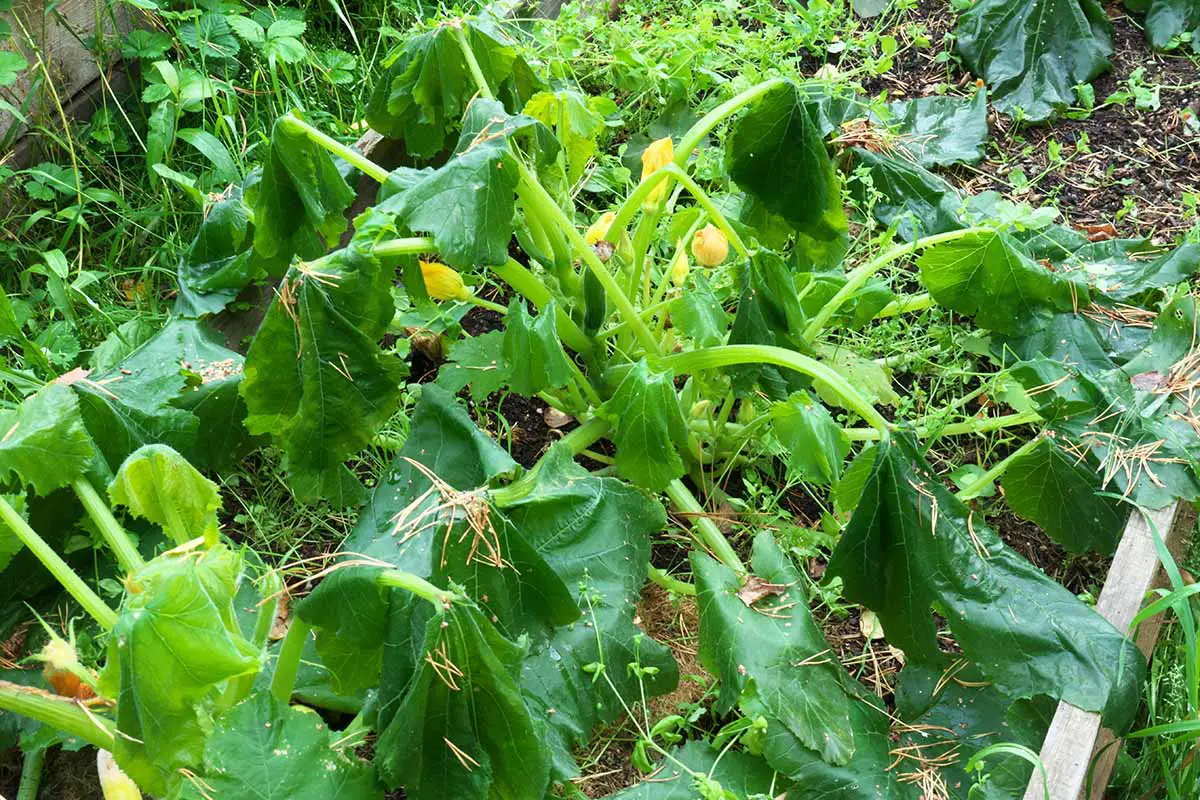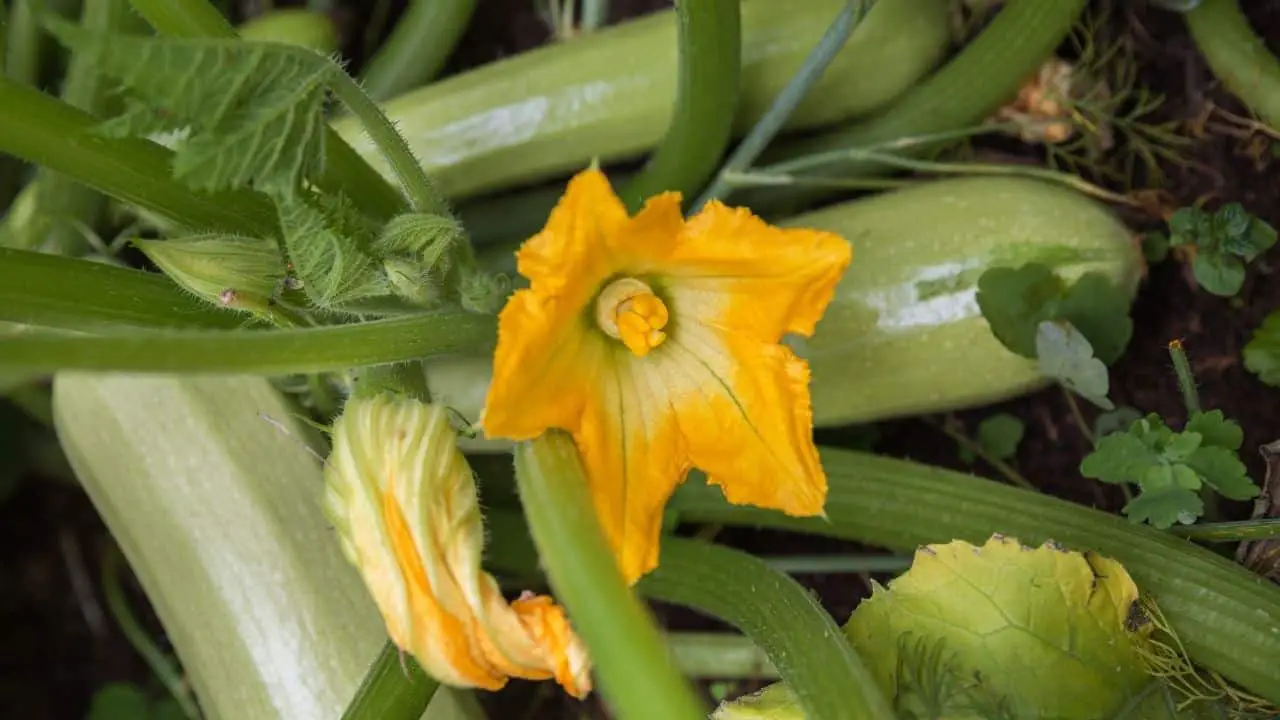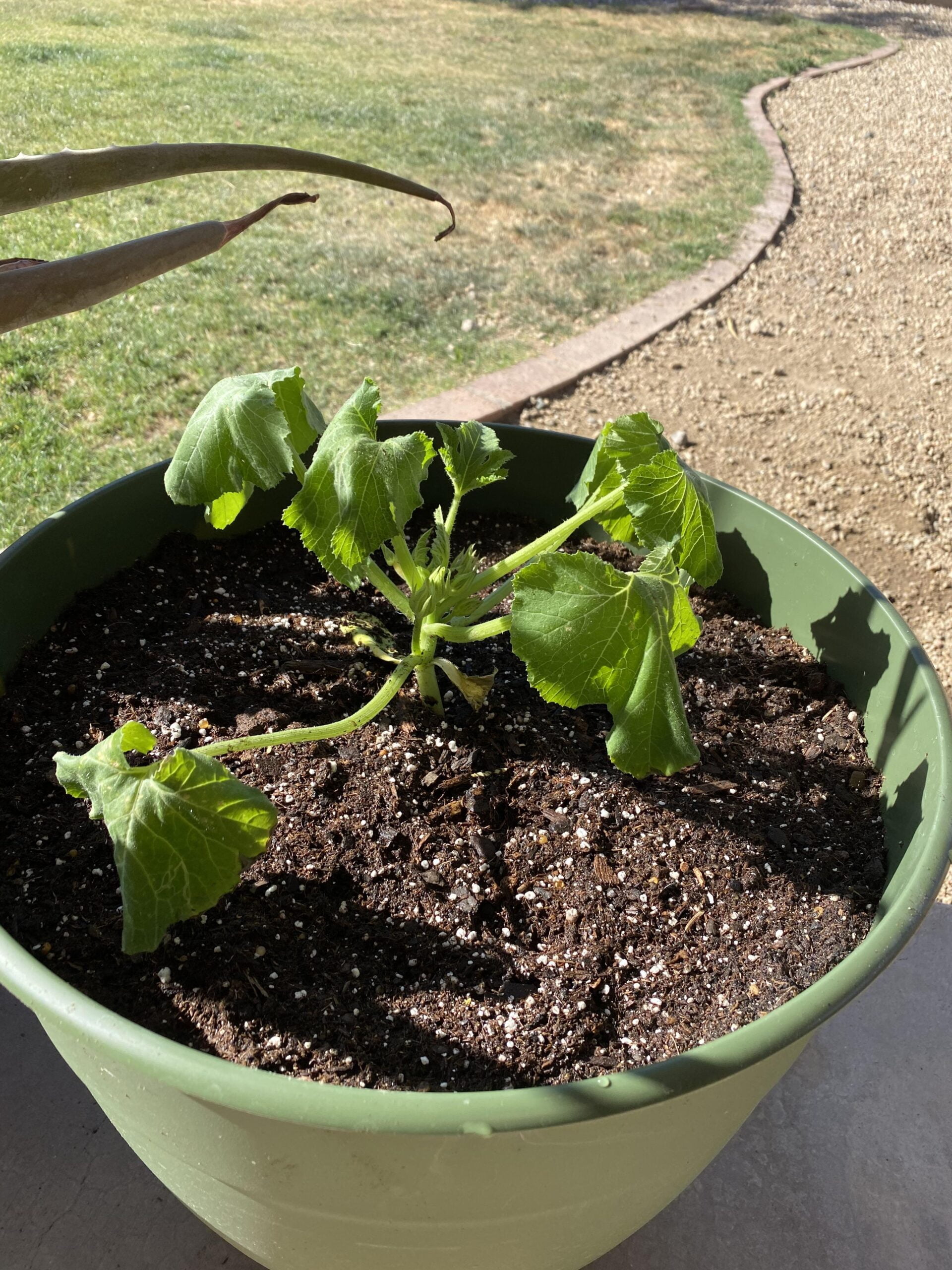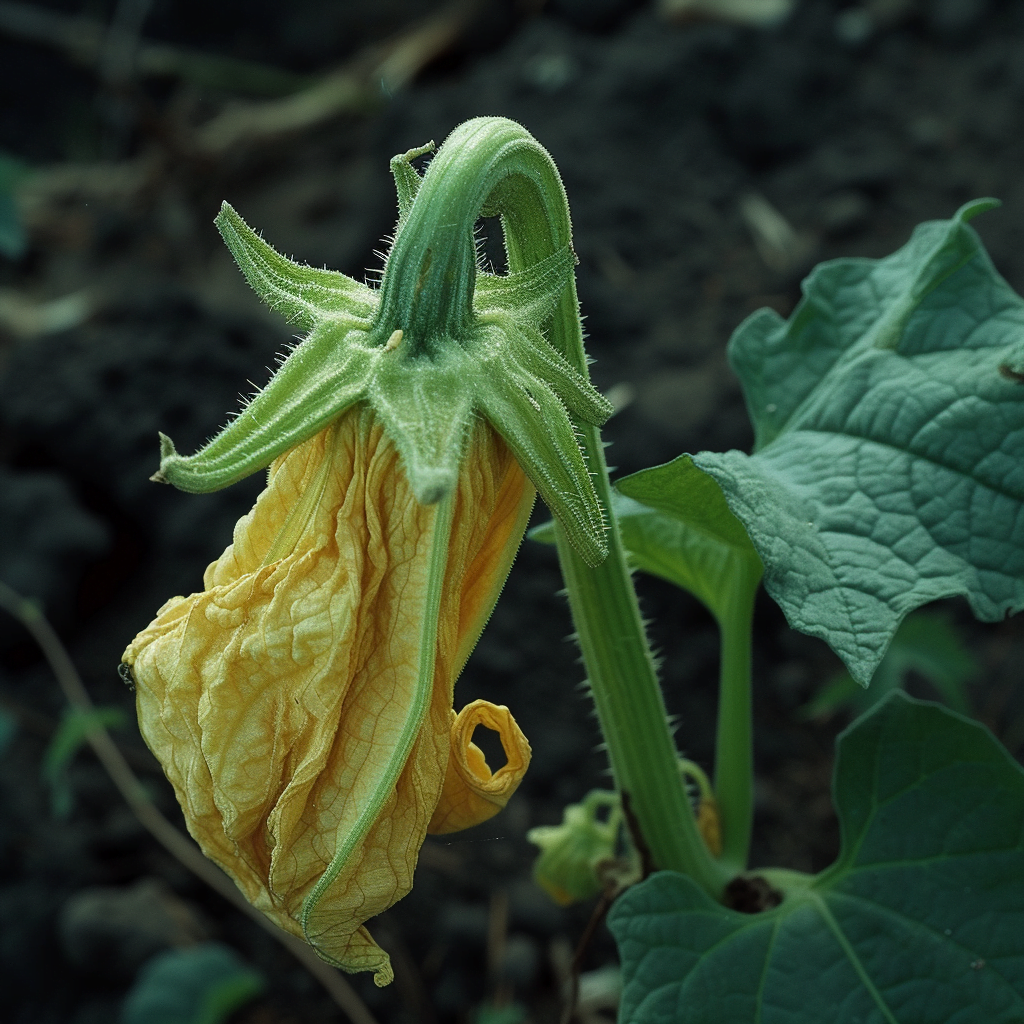Have you ever walked out to your garden, hopeful and excited to see your zucchini plant thriving, only to be met with the disappointment of a droopy, wilted plant? Don’t worry, because there’s hope yet! In this article “Reviving a Wilted Zucchini Plant”, we will explore some simple and effective techniques to revive a wilted zucchini plant, giving it the TLC it needs to bounce back to life. By implementing these tried-and-true methods, you’ll be able to bring your zucchini plant back to its full, vibrant potential and enjoy a bountiful harvest in no time. So let’s roll up our sleeves and get ready to revive that wilted zucchini plant!
Assessing the Condition of the Zucchini Plant
Checking for signs of wilting
When assessing the condition of your zucchini plant, the first thing you’ll want to do is check for any signs of wilting. Wilting is a common symptom that can indicate various issues, such as underwatering, overwatering, nutrient deficiency, pest infestation, or disease. Look for drooping leaves, a lack of turgidity, and leaves that appear dry or crispy to the touch.
Examining the overall health of the plant
In addition to checking for wilting, it’s important to examine the overall health of your zucchini plant. Look for any discoloration or yellowing of the leaves, spots or lesions, stunted growth, or any other abnormalities. A healthy zucchini plant should have vibrant green leaves, robust growth, and no signs of damage.
Identifying the Causes of Wilting
Underwatering
Underwatering is one of the most common causes of wilting in zucchini plants. If the soil feels dry or if the plant is not receiving adequate water, the leaves can become droopy and wilted. To address this issue, ensure that you are watering your zucchini plant sufficiently and consistently. Touch the soil to determine whether it is moist or dry and adjust your watering schedule accordingly.
Overwatering
On the other hand, overwatering can also lead to wilting in zucchini plants. When the roots are consistently saturated, they may become waterlogged, causing the plant to wilt. Improving drainage by adding organic matter to the soil and avoiding overwatering can help prevent this issue. It’s essential to strike a balance and provide your zucchini plant with enough water without drowning it.
Nutrient deficiency
A nutrient deficiency can cause wilting in zucchini plants. Lack of essential nutrients, such as nitrogen, phosphorus, or potassium, can affect the plant’s ability to transport water and nutrients, leading to wilting. Check for any signs of nutrient deficiencies, such as yellowing leaves or stunted growth. Supplementing with organic fertilizers or applying foliar sprays can help correct nutrient deficiencies.
Pest infestation
Pests, such as aphids, spider mites, or squash bugs, can infest zucchini plants and cause wilting. Inspect your plant for any signs of pest infestation, such as chewed leaves or the presence of insects. Implement natural pest control methods, like attracting beneficial insects or using organic insecticides, as a last resort if necessary.
Disease or fungal infection
Diseases and fungal infections can also lead to wilting in zucchini plants. Common diseases include powdery mildew or bacterial wilt. Examine your plant for any signs of disease, such as powdery white patches or dark, rotting areas. Proper treatment, such as applying appropriate fungicides or removing affected parts, can help prevent further wilting and restore the health of your zucchini plant.

Providing Proper Watering
Determining watering needs
To provide your zucchini plant with proper watering, it’s crucial to determine its specific watering needs. Factors such as the plant’s size, weather conditions, and soil type all play a role in determining how much water your zucchini plant requires. As a general guideline, water the plant deeply when the top inch of soil feels dry to the touch.
Watering frequency and consistency
Consistent watering is key to maintaining the health of your zucchini plant. Regularly watering the plant, rather than sporadically, helps ensure that the soil retains adequate moisture. Depending on the weather conditions, you may need to water your zucchini plant two to three times per week. However, be cautious not to overwater, as it can lead to root rot and wilting.
Watering techniques
To provide proper watering to your zucchini plant, it’s recommended to use techniques that promote efficient water absorption. Avoid watering the leaves, as wet foliage can invite pests and diseases. Instead, direct the water towards the soil, focusing on the root zone. Watering in the morning or evening when temperatures are cooler can also help reduce water loss through evaporation.
Addressing Overwatering Issues
Improving drainage
If overwatering is the cause of wilting in your zucchini plant, it’s crucial to improve the drainage of the soil. Proper drainage ensures that excess water can freely flow away from the roots, preventing waterlogging. One method to improve drainage is by amending the soil with organic matter, such as compost or well-rotted manure. These materials help loosen compacted soil and improve its ability to drain.
Adjusting watering frequency
To address overwatering issues, it’s important to adjust the watering frequency. Allow the top few inches of soil to dry out before watering again. This prevents water from sitting stagnant in the soil and helps the plant establish a healthy root system. Use a moisture meter or simply stick your finger into the soil to determine if watering is necessary.
Root rot management
Overwatering can contribute to the development of root rot, a fungal infection that causes decay in the roots. If your zucchini plant is suffering from root rot, it is crucial to address the issue promptly. Clean and disinfect any gardening tools to prevent further spread of the fungus. Consider replanting your zucchini in fresh soil to prevent reinfection. In severe cases, you may need to remove the affected plant entirely.

Reviving a Dehydrated Zucchini Plant
Rehydrating the soil
If your zucchini plant is dehydrated and wilting due to underwatering, the first step is to rehydrate the soil. Thoroughly water the plant, ensuring that the water penetrates the root zone. Consider using a soaker hose or drip irrigation system to provide a slow, steady water supply. Monitor the soil’s moisture levels and continue to water as needed until the plant recovers.
Pruning and trimming
To revive a dehydrated zucchini plant, it may be necessary to prune and trim certain parts of the plant. Remove any wilted or dead leaves to redirect the plant’s resources towards healthier areas. Additionally, if the plant has become extremely dehydrated, consider trimming back some of the foliage to reduce the water requirements temporarily.
Mulching to retain moisture
Mulching can help retain moisture in the soil and prevent further dehydration. Apply a layer of organic mulch, such as straw or wood chips, around the base of the zucchini plant. This helps to regulate soil temperature, reduce evaporation, and suppress weed growth. Remember to leave some space around the base of the plant to prevent rot and crown damage.
Correcting Nutrient Deficiencies
Identifying nutrient deficiencies
Identifying nutrient deficiencies is crucial in correcting them and promoting the overall health of your zucchini plant. Common signs of nutrient deficiencies include yellowing leaves, stunted growth, and poor fruit production. To accurately diagnose the deficiency, it may be helpful to conduct a soil test or consult a local gardening expert. This will allow you to determine the specific nutrients lacking in your plant.
Supplementing with organic fertilizers
Once you have identified the nutrient deficiency, you can correct it by supplementing with organic fertilizers. Organic fertilizers, such as compost, manure, or fish emulsion, provide a slow-release source of nutrients that zucchini plants can absorb over time. Follow the product instructions for application rates and frequency to avoid overfertilization, which can damage the plant.
Applying foliar sprays
In addition to using organic fertilizers, applying foliar sprays can provide a quick nutrient boost to your zucchini plant. Foliar sprays are liquid solutions that contain essential nutrients and can be sprayed directly onto the leaves for absorption. They are especially beneficial when nutrient deficiencies are severe or when the plant is unable to absorb nutrients effectively through its roots.

Managing Pests in Zucchini Plants
Identifying common pests
When managing pests in zucchini plants, it’s important to be able to identify common culprits. Common pests that can affect zucchini plants include aphids, spider mites, squash bugs, and cucumber beetles. Inspect your plant regularly for any signs of pest infestation, such as chewed leaves, distorted growth, or the presence of insects on or around the plant.
Implementing natural pest control methods
Whenever possible, it’s recommended to implement natural pest control methods to manage pests in your zucchini plants. Encourage the presence of beneficial insects, such as ladybugs or lacewings, which feed on pests. Use companion planting techniques, such as planting marigolds or nasturtiums nearby, as these plants can repel certain pests. Regularly inspect and remove pests manually to prevent infestations from spreading.
Using insecticides as a last resort
If natural pest control methods are unsuccessful in managing the pest infestation, the use of insecticides may be necessary. However, it’s important to consider insecticides as a last resort and opt for organic options whenever possible. Follow the instructions on the insecticide packaging carefully and avoid using it during peak flowering periods to avoid harm to beneficial pollinators.
Treating Diseases and Fungal Infections
Diagnosing common diseases and fungal infections
Diagnosing diseases and fungal infections in zucchini plants can help determine appropriate treatment methods. Common ailments include powdery mildew, bacterial wilt, or gray mold. Conduct a thorough inspection of your plant, looking for specific symptoms associated with each disease, such as powdery white patches, wilting, or fuzzy gray mold growth.
Applying appropriate treatments
Applying appropriate treatments is essential in managing diseases and fungal infections in zucchini plants. Treatments may vary depending on the specific disease or infection present. For powdery mildew, consider using organic fungicides containing sulfur or neem oil. For bacterial wilt, removing and destroying affected plants is often the best course of action. Gray mold can be managed by improving air circulation and reducing humidity around the plant.
Preventing future outbreaks
Once you have successfully treated a disease or fungal infection in your zucchini plant, it’s crucial to take steps to prevent future outbreaks. Practices such as crop rotation, removing infected plant debris, and ensuring proper plant spacing can help reduce the risk of diseases and fungal infections. Additionally, maintaining optimal watering and nutrient levels supports the overall health of the plant, making it more resistant to future outbreaks.

Strengthening the Zucchini Plant’s Immune System
Providing proper sunlight and temperature
To strengthen the immune system of your zucchini plant, it’s important to provide it with proper sunlight and temperature. Zucchini plants thrive in full sun, so ensure they receive at least six to eight hours of direct sunlight daily. Additionally, maintaining an appropriate temperature range, between 70 and 85 degrees Fahrenheit (21 to 29 degrees Celsius), helps optimize the plant’s growth and immune defenses.
Maintaining optimal soil pH
Soil pH plays a crucial role in the overall health and immune system of your zucchini plant. Aim for a slightly acidic to neutral soil pH range of 6.0 to 7.0. Conduct a soil test to determine the current pH level and make adjustments using organic soil amendments if necessary. Maintaining proper soil pH allows the plant to absorb nutrients efficiently and reduces the likelihood of nutrient deficiencies.
Introducing beneficial insects
Introducing beneficial insects is an effective way to strengthen the immune system of your zucchini plant. Beneficial insects, such as ladybugs, lacewings, or predatory mites, prey on pests that can damage the plant. Attracting these beneficial insects to your garden by planting flowers like cosmos, daisies, or yarrow can help create a balanced ecosystem and reduce the risk of pest infestations.
Protecting the Zucchini Plant from Environmental Stress
Shielding from excessive heat or cold
Environmental stress, such as excessive heat or cold, can weaken zucchini plants and make them more susceptible to wilting. Shield your zucchini plant from extreme temperatures by providing shade during scorching hot days or using frost protection methods during chilly nights. This can be achieved by using shade cloth, plant covers, or simply relocating potted plants to sheltered areas when necessary.
Protecting against strong winds
Strong winds can physically damage zucchini plants and hinder their growth. Protect your plants from strong winds by providing windbreaks, such as fences or hedgerows, to create a barrier. Staking or tying up the plants can also help provide support and prevent them from being knocked over or damaged by gusts of wind.
Mulching to regulate soil temperature
Mulching is not only beneficial for retaining moisture but also helps regulate soil temperature. Apply a layer of organic mulch, such as straw or wood chips, around the base of the zucchini plant. This insulation helps to keep the soil temperature stable, reducing heat stress during hotter periods and protecting the roots from cold temperatures during cooler seasons.
Conclusion
By following these comprehensive steps and providing proper care to your zucchini plant, you can effectively assess and address any issues that may arise. From identifying causes of wilting to reviving dehydrated plants and managing pests or diseases, your zucchini plant can thrive with the right care and attention. Remember to tailor your approach to the specific needs of your plant, and enjoy a bountiful harvest of delicious zucchinis. Happy gardening!



